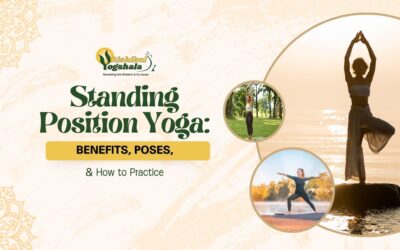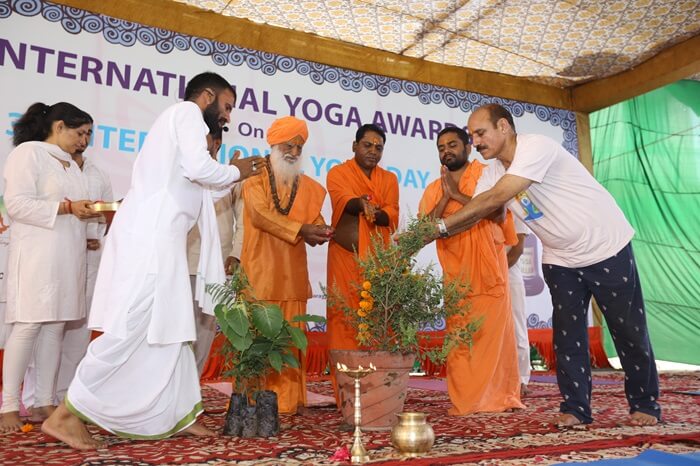Mountain Pose (Tadasana): The Foundation of All Asanas
The Mountain Pose, or Tadasana, is the foundational standing yoga pose from which all other yoga postures emerge. Derived from the Sanskrit words “Tada,” meaning ‘mountain,’ and “Asana,” meaning ‘pose,’ Tadasana fosters a grounding feeling, stability, and a deeper connection to nature.
As a simple yet profound yoga pose, Tadasana is perfect for enhancing body posture and transforming physical and mental health patterns. In the Sun Salutation sequence A, Mountain Pose serves as the base for 12 traditional yoga poses due to its numerous benefits for the body, mind, and spirit.

Benefits of Parvatasana (Mountain Pose)
Parvatasana benefits include improved posture, increased flexibility in the spine, enhanced circulation, reduced stress, and a calming effect on the mind.
1. Improves Body Posture and Health:
- Sitting for extended periods often leads to tight muscles and back pain. Practising Mountain Pose helps align the spinal skeletal system into a natural ‘S’ shape. Engaging the muscles strengthens weak areas and the core, contributing to overall health.
2. Enhances Organ Function:
- Tadasana promotes a free flow of prana to the spine, creating space within the body for internal organs to function more efficiently. This leads to improved digestion, respiration, and circulation. Experience these benefits with consistent practice.
3. Calms the Mind:
- Standing in Mountain Pose with focused concentration and breath fosters sharp focus and a serene mind. The pose energizes the body by activating the flow of prana, which can alleviate feelings of depression and dreariness. This helps in developing a mind-body connection and inner awareness.
4. Strengthens the Lower Body:
- Engaging your legs and firmly grounding your feet on the floor strengthens the knees, thighs, and ankles. A strong lower body is crucial for mobility and injury prevention.
5. Develops Balance and Coordination:
- Maintaining the pose enhances balance and posture. Deep, controlled breathing cultivates prana—the life force that keeps the spine agile and helps maintain balance.

Instructions for Tadasana
- Stand tall on a yoga mat, embodying a mystical mountain.
- Distribute your weight evenly between both feet and align your toes.
- Lengthen your spine, soften your stomach, widen your collarbones, and lift your heart toward the sky.
- Raise your arms up alongside your ears, parallel to the floor, with palms facing forward.
Different Hand Movements in Tadasana:
- Fold your hands together in Anjali Mudra in front of your heart chakra to open the Anahata energy centre.
- Rest your arms alongside your body, palms down.
- Raise your arms and fold your hands together, or face your palms toward each other.
Tips and Modifications:
- If you feel off-balance with feet together, separate them hip-distance apart and align the knees with the second and third toes.
- Use a wall for support by aligning your heels, sacrum, and shoulder blades against it.
- To deepen the pose, close your eyes and observe the flow of prana with each inhalation.
Alignment Tips:
- Lengthen your spine from the crown of your head and engage your core muscles.
- Open your chest toward the ceiling and draw your shoulder blades back and down.
- Ensure your ears are over your shoulders and align your head directly over your pelvis, which should be on top of your ankles.
- Keep your chin parallel to the yoga mat.
Contraindications:
- Shoulder Injury
- Insomnia
- Headache
- Low Blood Pressure
Also Read – Top 7 Health benefits of Trikonasana (Triangle Pose)
Conclusion
Every time you practice Mountain Pose, focus on the pose, alignment, and benefits you gain from mindful practice. To explore More advanced techniques and unlock your potential in mountain Pose, consider joining 200hr multistyle yoga teacher training, 300 hour yoga teacher training in Goa, or 500-hour Yoga Teacher Training in India at Rishikul Yogshala. For a holistic experience, you might also be interested in our Ayurveda Retreat in India or a Yoga Retreat in India.















